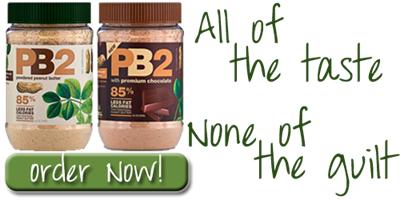 Cholesterol is a waxy substance manufactured in your liver and small intestines found just about everywhere throughout your body. Your body weight is about 0.2 percent cholesterol. Molecules called lipoproteins carry cholesterol throughout your bloodstream. There are two types of lipoprotein molecules.
Cholesterol is a waxy substance manufactured in your liver and small intestines found just about everywhere throughout your body. Your body weight is about 0.2 percent cholesterol. Molecules called lipoproteins carry cholesterol throughout your bloodstream. There are two types of lipoprotein molecules.
Low Density Lipoproteins (LDL) – These lipoprotein molecules carry cholesterol to various tissues throughout your body including organs. Because of its lower density, when this lipoprotein molecule transports cholesterol to your organs, it will allow some of the cholesterol to stick to blood vessel walls. When cholesterol is found in greater concentrations along the blood vessel walls it will eventually block them, stopping blood flow to the heart until your heart stops too.
High Density Lipoproteins (HDL) – These lipoprotein molecules act as a protector of the heart. While the LDL’s transport cholesterol throughout the body and leave some of the cholesterol stuck to blood vessel walls, the HDL molecules pull the excess cholesterol from the artery walls and transports it back to your liver for removal.
Knowing your cholesterol level is somewhat meaningless unless you also know your LDL to HDL ratio. Here is a table of exactly how much is desirable, borderline, and undesirable measured in milligrams per deciliter of blood to serve as an easy quick reference for you.
| Desirable | Borderline | Undesirable | |
|
Total Cholesterol |
<200 |
200-239 | =>240 |
|
High Density Lipoproteins |
>60 | 40-59 | <40 |
|
Low Density Lipoproteins |
<130 | 130-159 | =>160 |
|
Triglycerides |
<150 | 150-199 | =>200 |
Triglycerides – The storage form of fat. Triglycerides, at the bottom of the chart, is worth showing also because if your Triglycerides are too high the elevated levels in the blood can lead to heart disease and artery clogging regardless of where your cholesterol level and LDL to HDL ratio is at. The two most dangerous things you can do for your heart is to lower HDL levels or increase your triglyceride level.
Consuming cholesterol can raise your cholesterol level but a lot of this is genetics. Consuming less cholesterol does not mean you are going to lower your cholesterol unless you are genetically prone to self regulate your cholesterol levels. In other words, if you are genetically prone to self regulate your cholesterol level you could increase your daily cholesterol consumption and your body will offset that by producing less cholesterol on its own. If you consume too little, the opposite affect. This varies from person to person on how the body self regulates cholesterol but everyone produces at least some amounts of cholesterol on their own without the help of consuming cholesterol. And like wise, everybody’s body self regulates cholesterol levels differently from one person to the next which means you DO NOT want to go crazy and eat a whole pound of bacon and a carton of eggs in one sitting. The less lucky people are those who are not genetically prone to self regulate cholesterol levels so they MUST monitor how much cholesterol they consume to keep cholesterol levels down. The body’s ability to self regulate cholesterol levels generally decrease with age.
Healthy and Un-Healthy fats and how they can regulate your cholesterol
Saturated fats raise your LDL’s but they also raise your HDL’s to remove the cholesterol left behind on your artery and blood vessel walls by the LDL’s AND saturated fats lower triglycerides. Saturated fats certainly raise your overall cholesterol levels. Even though your HDL’s are raised its still better to limit your consumption of saturated fats. Saturated fats are found mostly in animal products including dairy, poultry, and red meat. Because of a largely important Testosterone factor men and women should generally follow different nutrition guides especially when it comes to quantities of fats. A one plan nutrition fits all is an over simplified nutrition plan because of gender differences alone. An adult female may want a diet of 25 – 35 percent fat and an adult male may want a diet of 33 to 50 percent fat. Instead of replacing your fat intake with more carbohydrates, replace more cholesterol raising saturated fats with healthier types of fats. A higher fat diet of healthy fats verses a lower fat diet replacing fats with more carbohydrates will actually raise your HDL levels, protecting your heart. The lower fat diet with higher carbohydrates will generally lower your over all cholesterol including your LDL level but it will also lower your HDL levels making you more vulnerable to heart problems. The bottom line here is to make sure you get enough healthier fats in your diet.
Monounsaturated Fats – These are probably the most important fats you could consume for your heart health. In short, monounsaturated fats will raise HDL levels and lower your triglyceride all while NOT raising your LDL levels. This is the model of the Classic Mediterranean diet. Monounsaturated fats are found in oils from olives (olive oil), canola oil, and oils from nuts such as macadamia nuts. What makes these unsaturated fats Mono is that these fats are not fully saturated with hydrogen. Each molecule contains at least one pair of carbon atoms connected by a double bond.
Polyunsaturated Fats (polyunsaturated fatty acid) – Polyunsaturated fats are divided further into omega-3 (fats found in fish and fish oils) and omega-6 (fats in plants and plant oils) fatty acids. A subset of these are essential fatty acids. Essential fatty acids are fatty acids your body needs but cannot produce on its own, so you must consume it from food. These essential fatty acids are important because they help regulate blood pressure and blood clotting. One omega 6 essential fat is linoleic acid found in safflower oil, walnuts, red meats, vegetable seeds, polyunsaturated margarines, and poultry. One omega 3 essential fat is linolenic acid found in fatty cold water fish like salmon, Halibut, Snapper and tuna as well as in flaxseed oil, shrimp, scallops, winter squash and raw Tofu. What makes these unsaturated fats Poly is that each fatty acid has more than one double bond that exists within the representative molecule. One type of polyunsaturated fat to stay away from is trans fat.
Trans fats – polyunsaturated fats transformed from liquid to solid fats during a chemical process called hydrogenation. Trans fats are also commonly known as partially hydrogenated fats. Trans fats are primarily found in baked goods, processed foods, and very little amounts in natural foods. Trans fats lower your hearts greatest protector, your HDL levels while raising total cholesterol and raising LDL. This is not a good combination and sets the stage for serious heart problems, even death.
The Classic Mediterranean Diet
People living in the olive growing regions tend to live longer healthier lives than the rest of the world. They have fewer heart attacks, less heart disease, fewer cancers and they experience an increased all around wellness than other people living and eating in other regions. Most of their fat comes from monounsaturated fats such as olive oil. Certainly not trans fats or partially hydrogenated fats. Their protein comes from fish, eggs and cheese. Their carbohydrates comes from whole grain and whole wheat breads and pastas as well as rice and fresh seasonal fruits and veggies. They consume small amounts of saturated fats and almost no refined or artificially sweetened carbohydrates.
– Tom


